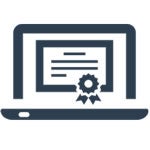Essentials of Logistics Certificate

Price: Member: $239.00 | Non-Member: $299.00
Continuing Education Credits (CECs): 5 hours
This program has been updated to an interactive format that consists of four modules, with an exam after each module. This new design gives the opportunity for participants to actively engage with the content. In addition to essential and practical information, each module is full of applicable tips and tricks and tried and true advice from seasoned supply chain professionals. Upon successful completion of the four modules, you will receive a certificate in logistics of healthcare supply chain management.This course is also available as part of the Essentials of Healthcare Supply Chain Certificate Series.
Learning Objectives:
Part 1: Shipping and Receiving
- Identify the three procedural methods of receiving and discuss the difference between each.
- Describe two steps which should happen before signing the bill of lading.
- Recall the two types of damage encountered at receiving and discuss the necessary steps needed to rectify each situation.
- List the certain deliveries which require special handling.
- Outline and summarize the five types of shipments frequently seen.
Part 2: Warehousing
- Describe strategies for reducing the costs of storing goods.
- Make sound decisions about where to store goods.
- Explain the factors that influence the design of an efficient warehouse.
- Apply proven principles to manage a warehouse efficiently.
- Decide if an off-site warehouse makes sense for your organization.
- Describe common enhancements and alternatives to warehousing.
Part 3: Distribution
- Name an instance where user requisitions can be a good procedure.
- State at least three advantages of using the cart exchange system.
- Name at least three disadvantages of using the cart exchange system.
- Discuss the advantages and disadvantages of the two-bin par level method.
- Recall the three main advantages of the Point-of-Use (POS) system.
- Discuss the disadvantages of the Point-of-use (POS) systems.
- Describe the purpose of nurservers.
- List disadvantages of using nurservers.
Part 4: Other Distribution Considerations
- Name at least three advantages for automating the OR preference card system.
- List some universal items that should be included on the standard case cart.
- Discuss some of the most common exceptions that are not included on the standard case cart.
- Identify a strategy that is beneficial for purchasing movable equipment.
- Explain some strategies as to why using a pool of equipment is a good practice.
- Describe some issues regarding pooled equipment and propose resolutions.
- Name at least three reasons why linen distribution through exchange carts work well.
